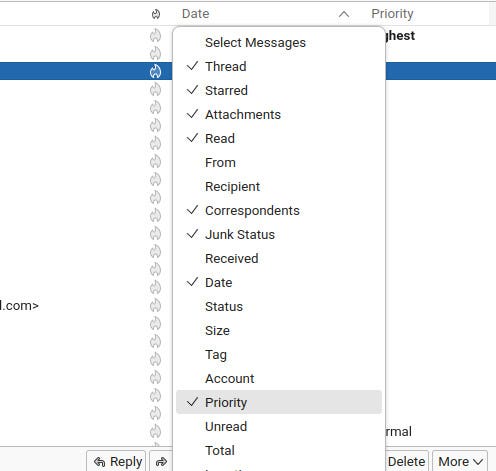Have you ever sent an email to a recipient that was of utmost importance? When you did, how did you indicate that this message was very important?
Did you put “PRIORITY” in the subject? Did you send recipients a follow-up message asking them to read the previous email as soon as possible? Or did you just hope they would still guess the crucial importance of your every word?
What if someone sends you a message that demands your immediate attention? How do you know that you should drop everything and open this missive immediately? In short, maybe you don’t know.
Define a priority indicator
One solution to this problem is to set a priority flag. It is very likely that the email client you use allows you to set a priority flag in each of your emails to send.
Say, for example, you have a crucial message to send to someone and you want to make sure that person is aware of its high importance. You do this by composing your message, giving it the highest priority, and sending it, knowing that the recipient will see that high priority flag and read the message immediately.
But it’s not always the case. Say you use Apple Mail to compose the message, set the priority to “high”, and send it. When the recipient receives the message, they may not see the priority flag for one of three reasons:
- He is using another email client
- His email client does not support the priority flag.
- He does not know where to look for this indicator.
Not all email clients display priority the same way
One of the main issues is that not all email clients display priority the same way. For example, the priority indicator in Thunderbird doesn’t work quite the same way it does in Apple Mail.
In Apple Mail, an email’s high priority flag is marked with “!!” and is displayed immediately to the right of the sender’s name:

The indicator!! tells you that this is a high priority email. Jack Wallen/ZDNET
But did you really know that “!!” is synonymous with high priority? Did you know that if an Apple Mail email is normal or low priority, it is not indicated in any way? And did you know that if you read that same email in another client, you won’t see that double “!!” indicating that this is a high priority communication?
It’s a confusing and frustrating situation, but all is not lost.
Take the example of Thunderbird. Although Thunderbird is not configured to show priority out of the box, you can change this so that even if an email is sent from Apple Mail, the priority flag will show.
I will show you how to configure this function.
How to Reveal Thunderbird’s Priority Flag
The only thing you will need is the Thunderbird email client (regardless of what operating system it is installed on) configured with your email account. There it’s done.
Open Thunderbird
The first thing to do is to open Thunderbird.
Enable Priority
Right-click any column header in the upper right pane (such as Subject, RECIPIENT Or Date). In the pop-up window that appears, select Priority to add this column.

You can enable all kinds of columns in Thunderbird. Jack Wallen/ZDNET
At this point, you should see a new column appear in the message list, which clearly indicates the priority. The only downside is that you add an extra column to the message list, which can be extra clutter.
However, if you want to be able to view the priority of an email, you really have to go through this, because even if you open the email, the priority indicator cannot be viewed anywhere else in the software.

Thunderbird clearly indicates the priority of an email. Jack Wallen/ZDNET
I often use the priority indicator in my emails (except when I use Gmail, because Google regularly has its own way of doing it), but I can’t tell if the client the recipient is using will show the priority of my email or not. missive.
However, if you use Thunderbird as your email client, I highly recommend enabling the priority column.
Source: “ZDNet.com”
